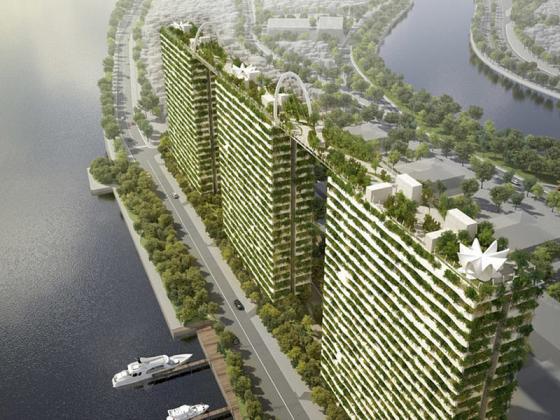Green Building Community
Studies: High Ventilation Rates are Associated with Lower Rate of Illness and Absences
Posted by: YijunW

Have you thought about how ventilation* rates influence human health and performance? Studies have shown high ventilation rates are associated with lower respiratory illness, lower rates of sick building syndrome, and lower absences in office and schools. Respiratory Illness Research has shown that increased ventilation rates are associated with fewer adverse health effects. Studies found that high-density buildings such as barracks, jails, nursing homes, and health care facilities that commonly have low ventilation rates tend to be associated statistically significantly with 50 percent to 370 percent higher rates of respiratory illness. The presumption is that low ventilation rates are likely to lead to high airborne concentrations of viruses and bacteria (Berkeley Lab). Sick Building Syndrome Many studies consistently concluded that workers of office buildings with above-average ventilation rates have 10 percent to 80 percent fewer sick building syndrome symptoms**. A statistical analysis shows a drop in ventilation rate from 17 to 10 cubic feet per minute (cfm) is associated with a 15 percent increase in sick building syndrome and an increase in ventilation rate from 17 to 50 cfm is associated with a 33 percent decrease in sick building syndrome (Berkeley Lab). Absences in Offices and Schools Occupants of buildings with higher ventilation rates, particularly school buildings, have lower rates of absence (Berkeley Lab). In one workplace study, a doubling of ventilation rate from 25 to 50 cfm is associated with a 35 percent decrease in the short-term absence (Berkeley Lab). Four studies found fallen absence rates were associated statistically significant with more ventilation or lower carbon dioxide concentrations in schools or daycare buildings. One of the four studies, which is based on 162 classrooms for two years, found a 1.6 percent decrease in absence for each 2 cfm increase per capita in ventilation rate (Berkeley Lab). * Ventilation is defined as the supply of outdoor air to a building. ** Sick building syndrome is a condition affecting office workers, typically marked by headaches and respiratory problems, attributed to unhealthy or stressful factors in the working environment such as poor ventilation. To read more, please visit: https://iaqscience.lbl.gov/vent-summary
Please be kind and respectful!
Please make sure to be respectful of the organizations and companies, and other Rate It Green members that make up our community. We welcome praise and advice and even criticism but all posted content and ratings should be constructive in nature. For guidance on what constitutes suitable content on the Rate It Green site, please refer to the User Agreement and Site Rules.
The opinions, comments, ratings and all content posted by member on the Rate It Green website are the comments and opinions of the individual members who posts them only and do not necessarily reflect the views or policies or policies of Rate It Green. Rate It Green Team Members will monitor posted content for unsuitable content, but we also ask for the participation of community members in helping to keep the site a comfortable and open public forum of ideas. Please email all questions and concerns to admin@rateitgreen.com

